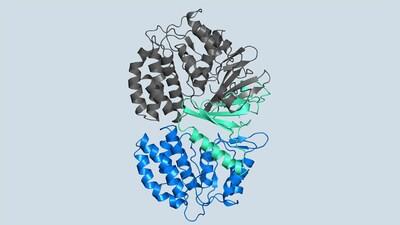
A Recipe To Reverse Cancer's Sweet Tooth
FN3K's role in breaking down glycation has been known for decades. But the structure of the kinase, needed for drug development, has remained a mystery until now. Joshua-Tor, CSHL postdoc Ankur Garg , and their team have revealed 3D structures of human FN3K captured in different states for the first time. These structures could point the way to new cancer therapies, offering hope for patients suffering from the deadly disease.
"Kinases are common in our cells," Joshua-Tor says. "So, in order to target only FN3K, and not the other kinases we need, we have to know exactly what it looks like. This gives us a precise model."
The model enabled the team to lay out the entire process by which FN3K breaks down glycation. They found that, unlike most kinases, human FN3K contains an amino acid called tryptophan. Yes, that's the same tryptophan that knocks you out after a big meal. When the team removed it from FN3K, the kinase became inactive. And when they changed it to a different amino acid, it transformed FN3K into a "super-enzyme," Garg says.
"Controlling one tiny amino acid can control the whole enzyme," he explains. "This is important for designing specific drugs to target only FN3K."
Collaborators at Memorial Sloan Kettering Cancer Center are now using the lab's new structures to do just that. Future clinical applications are still far away. However, Joshua-Tor says the first step is to identify existing small molecules that bind to FN3K.
"It's really remarkable when you think about it," she says. "These enzymes are so fine-tuned that everything has to be in the right state at the right time. It would be great if we could exploit that with an initial drug or molecule and go forward from there."
About Cold Spring Harbor Laboratory
Founded in 1890, Cold Spring Harbor Laboratory has shaped contemporary biomedical research and education with programs in cancer, neuroscience, plant biology and quantitative biology. Home to eight Nobel Prize winners, the private, not-for-profit Laboratory employs 1,000 people including 600 scientists, students and technicians. For more information, visit .
SOURCE Cold Spring Harbor Laboratory

Legal Disclaimer:
MENAFN provides the
information “as is” without warranty of any kind. We do not accept
any responsibility or liability for the accuracy, content, images,
videos, licenses, completeness, legality, or reliability of the information
contained in this article. If you have any complaints or copyright
issues related to this article, kindly contact the provider above.


















Comments
No comment